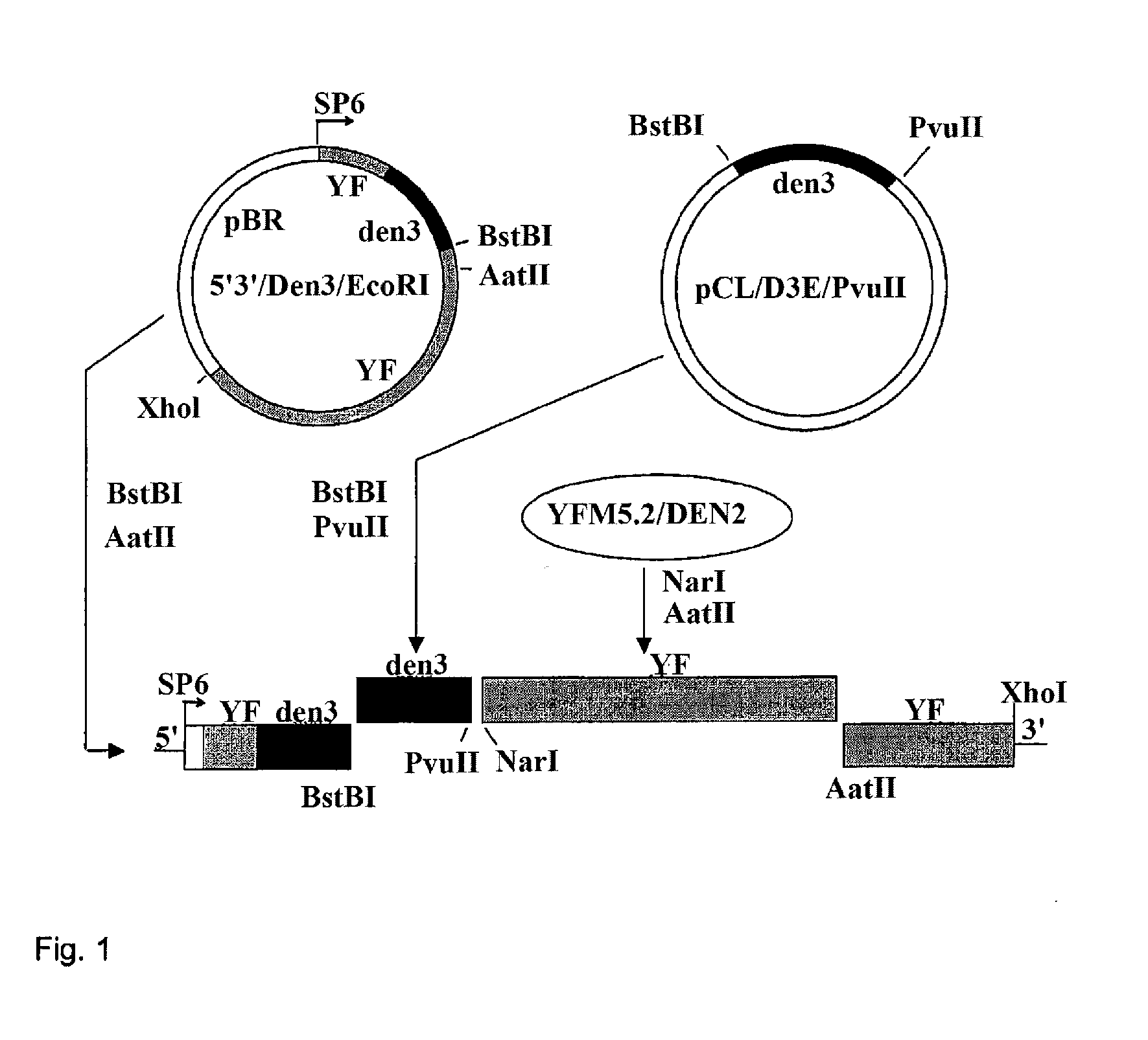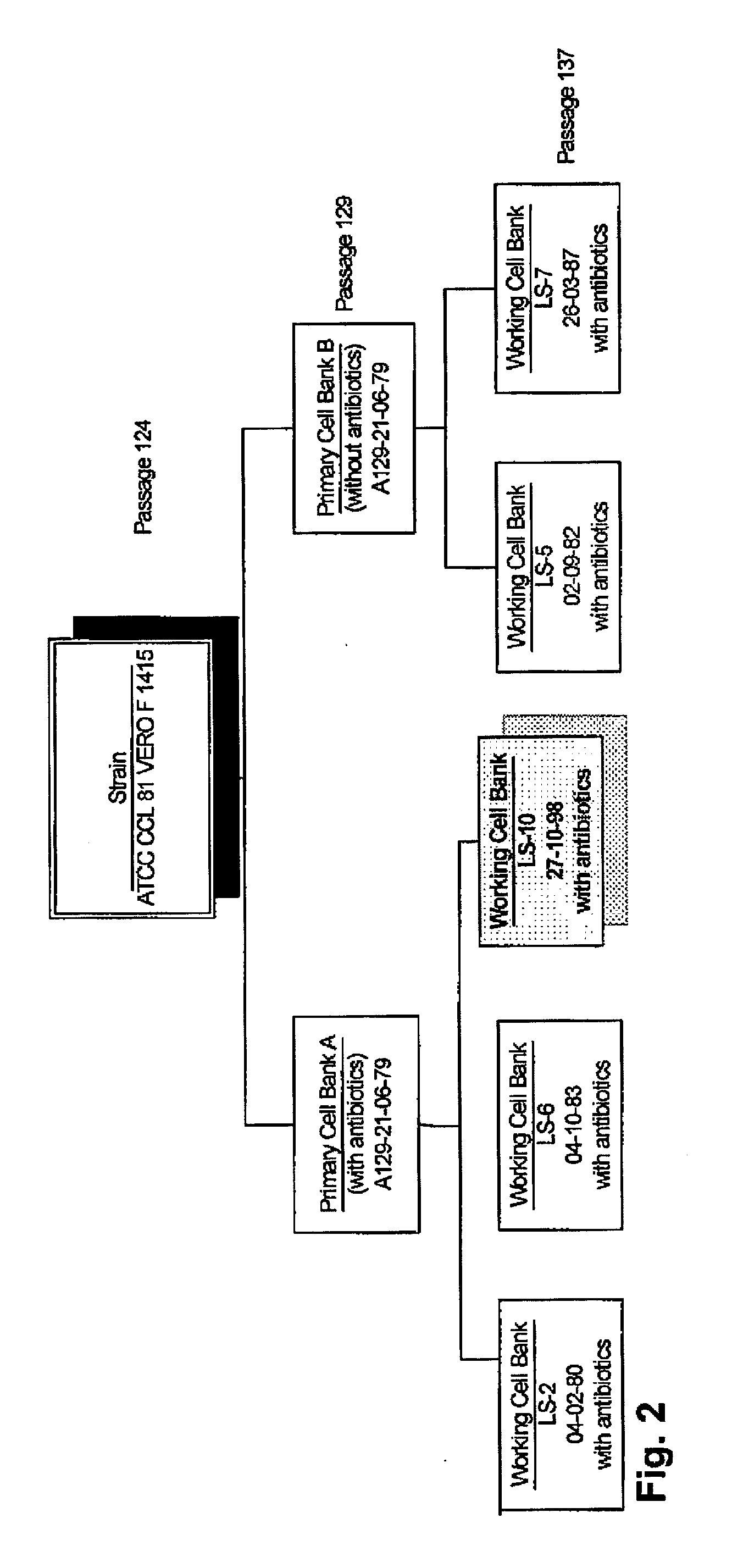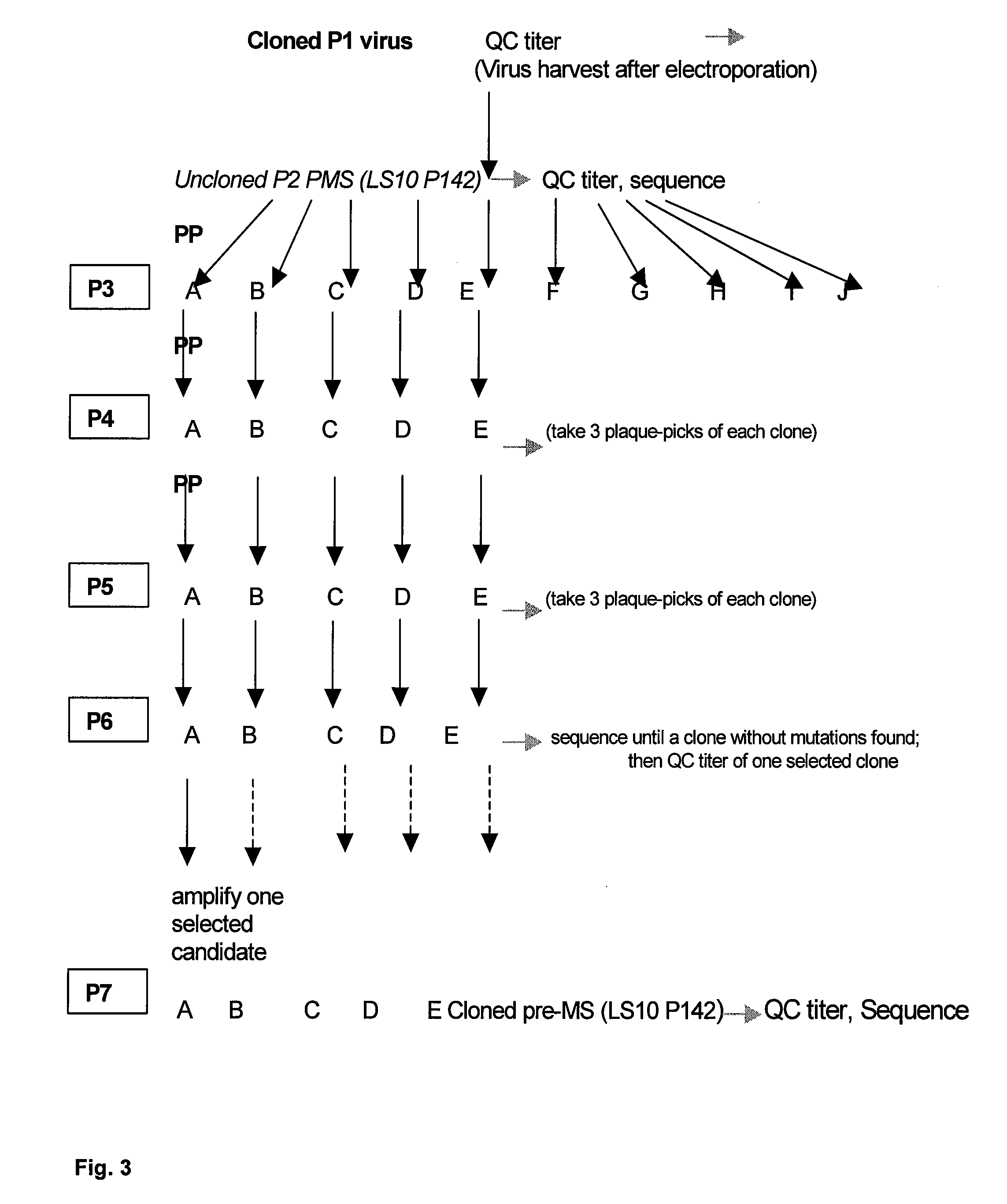Tetravalent Dengue Vaccines
a dengue virus and tetravalent technology, applied in the field of tetravalent dengue virus vaccines, can solve the problems of growing public health problems worldwide, no dengue vaccine approved, etc., and achieve the effects of promoting immunity, promoting immunity, and promoting immunity
- Summary
- Abstract
- Description
- Claims
- Application Information
AI Technical Summary
Benefits of technology
Problems solved by technology
Method used
Image
Examples
experiment 1
Viremia and Immunogenicity of Reconstructed Chimerivax™-DEN1-4 Viruses
[0144]The objectives of this study were to determine: (1) if reconstruction of chimeric viruses to correct mutations had changed the safety (viremia) and immunogenicity profiles of the vaccine candidate; (2) if dominance of chimeric DEN2, which had been shown to have higher immunogenicity than other chimeras when used at an equal concentration (Guirakhoo et al., Virology 75:7290-7304, 2001), could be modified by reducing its dose from 5 to 3 logs; and 3) if antibodies produced in monkeys upon immunization with 1 or 2 doses of a chimeric tetravalent formulation can neutralize WT dengue viruses isolated from different geographical locations.
[0145]Because the reconstructed DEN1 (ChimeriVax™-DEN100) chimera was not available by the time these monkey experiments had started, this chimera could not be evaluated along with other reconstructed viruses. Therefore the ChimeriVax™-DEN199 was used instead.
Safety and Immunogen...
experiment 2
A 31-Day Comparative Immunogenicity Study of Three YF / DEN-1 Vaccines Administered by a Single Subcutaneous Injection to Rhesus Monkeys
[0152]ChimeriVax™-DEN1 PMS virus acquired one mutation (resulting in an amino acid change from K to R at position E204) when passaged under laboratory conditions or cGMP manufacture to produce the working seed (see section on genetic stability above). This mutation, which was stable throughout manufacturing as well as multiple Vero passages (up to P20), increased the plaque size but attenuated the virus for 4-days old mice when inoculated by the i.c. route. The effect of this mutation on viscerotropism (induction of viremia) of the virus was assessed by inoculation of monkeys with ChimeriVax-DEN1 viruses with (clone E, P6) or without (clone J, P7) the E204 mutation. The original DEN1 chimera (ChimeriVax-DEN-1, uncloned P4, 1999) was selected as a control, because its viremia and immunogenicity profiles had already been evaluated in monkeys as a monova...
experiment 3
A 31-Day Comparative Immunogenicity Study of Six DEN Vaccine Preparations and YF-Vax® Administered by a Single Subcutaneous Injection to Cynomolgus Monkeys
[0156]Safety and immunogenicity of original as well as reconstructed chimeras as monovalent or tetravalent formulations were evaluated in rhesus monkeys and reported previously (Guirakhoo et al., Virology 257:363-372, 1999; Guirakhoo et al., J. Virol. 74:5477-5485, 2000; Guirakhoo et al., Virology 298:146-159, 2002). The current DEN1-4 PMS viruses (P7) had acquired one or two mutations when passaged under laboratory conditions (P7 to P10) or under cGMP manufacture to produce cGMP MS virus stocks (P8). Some of these mutations (see section genetic stability) were different than those reported for reconstructed chimeras (Guirakhoo et al., Virology 298:146-159, 2002). Moreover, previously constructed chimeras had been evaluated in rhesus species, which currently are difficult to obtain for preclinical studies of human vaccines. The cu...
PUM
| Property | Measurement | Unit |
|---|---|---|
| molecular weight | aaaaa | aaaaa |
| volume | aaaaa | aaaaa |
| concentration | aaaaa | aaaaa |
Abstract
Description
Claims
Application Information
 Login to View More
Login to View More - R&D
- Intellectual Property
- Life Sciences
- Materials
- Tech Scout
- Unparalleled Data Quality
- Higher Quality Content
- 60% Fewer Hallucinations
Browse by: Latest US Patents, China's latest patents, Technical Efficacy Thesaurus, Application Domain, Technology Topic, Popular Technical Reports.
© 2025 PatSnap. All rights reserved.Legal|Privacy policy|Modern Slavery Act Transparency Statement|Sitemap|About US| Contact US: help@patsnap.com



